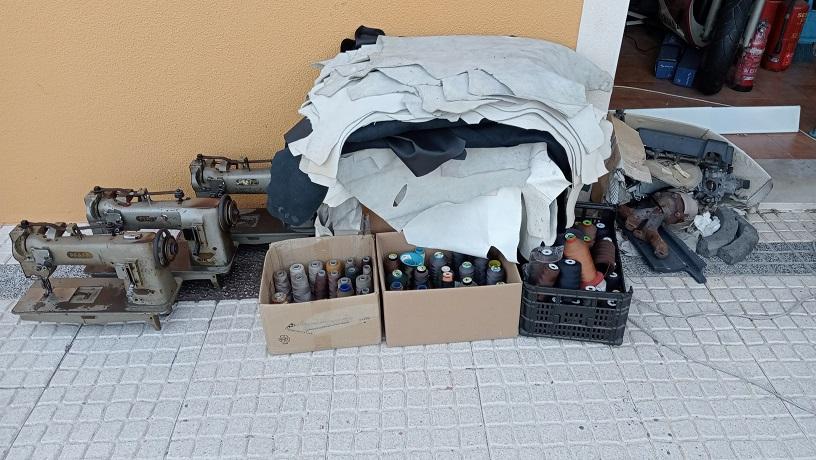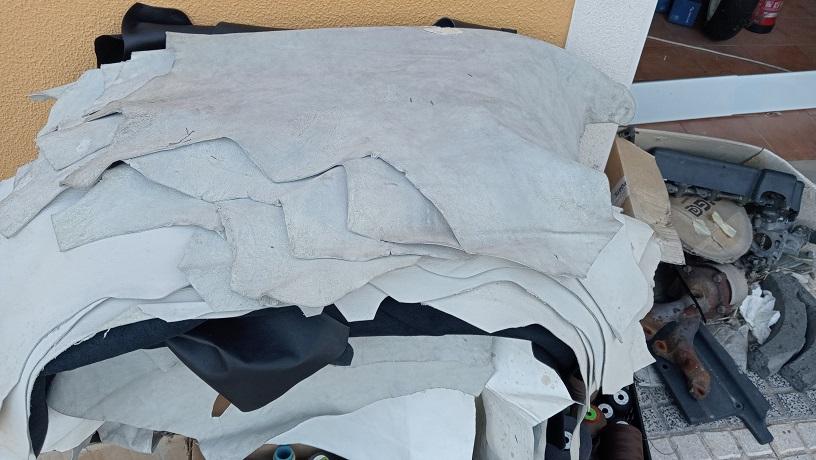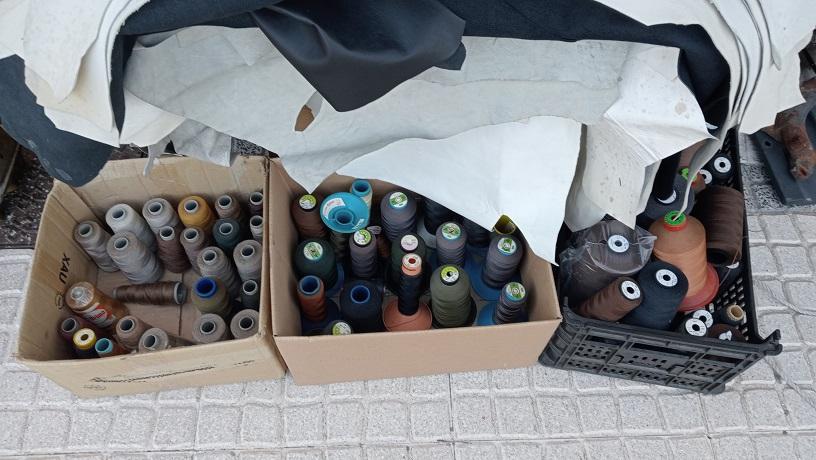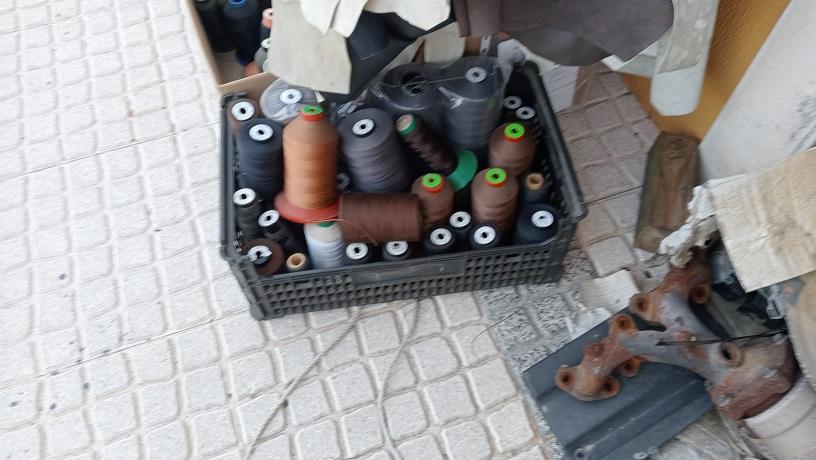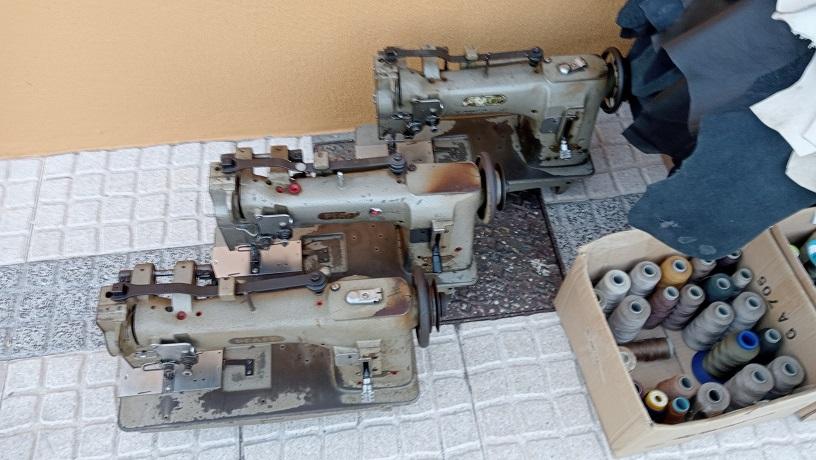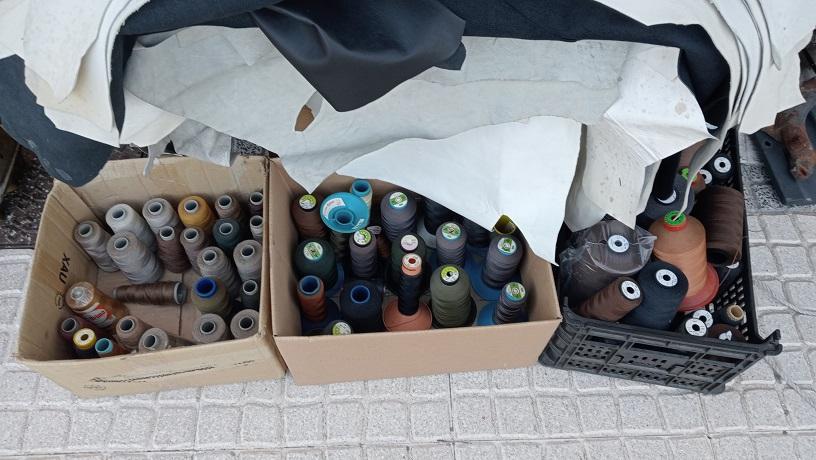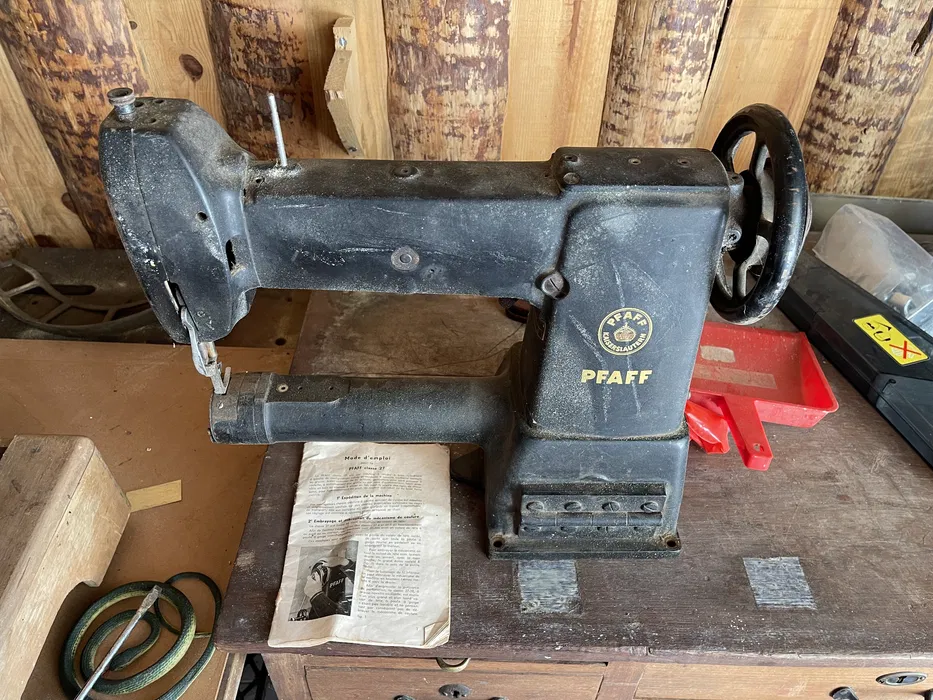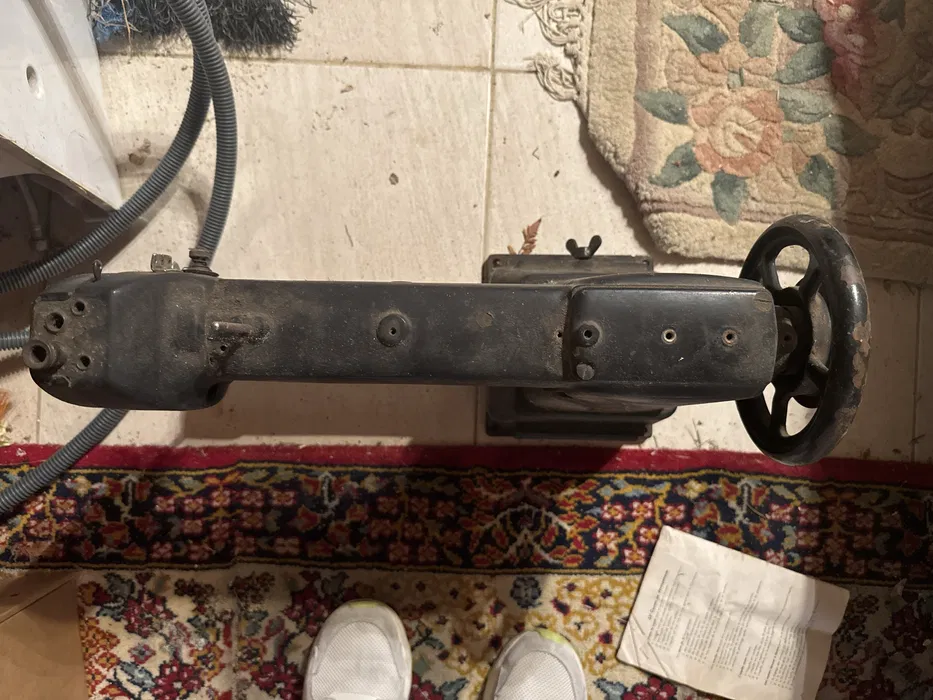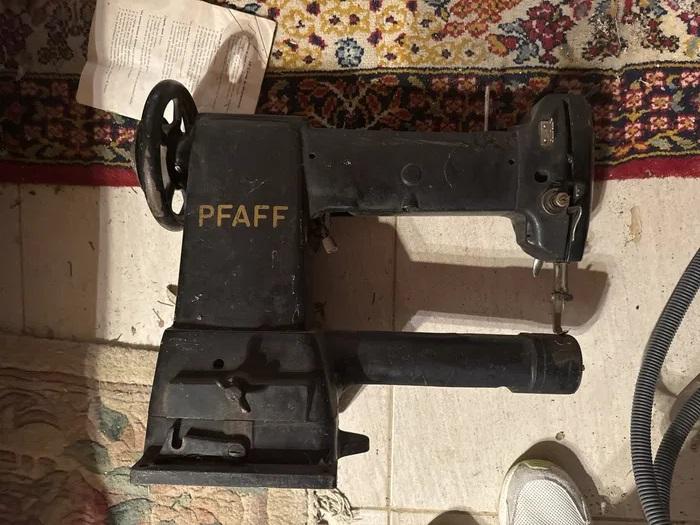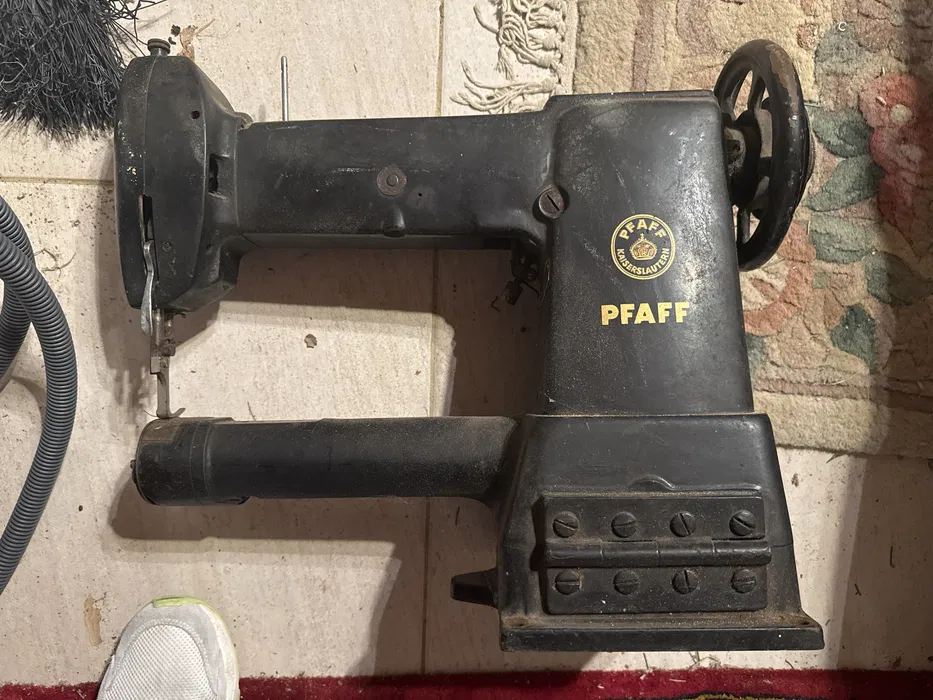
stitchgearhead
Members-
Posts
30 -
Joined
-
Last visited
About stitchgearhead
- Birthday 11/12/1962
Profile Information
-
Gender
Male
-
Location
Gradil, Portugal
-
Interests
Machining, woodworking, cars, photography - Still a newbie!
LW Info
-
Leatherwork Specialty
Still a newbie
-
Interested in learning about
Leather sewing
-
How did you find leatherworker.net?
Google
Recent Profile Visitors
The recent visitors block is disabled and is not being shown to other users.
stitchgearhead's Achievements

Member (2/4)
-
Finally a good purchase...I think!
stitchgearhead replied to stitchgearhead's topic in Leather Sewing Machines
Yeah, sorry about that. I forgot to mention that the right-most pile of stuff was unrelated - it just happened to be there when I offloaded the car! DF -
Finally a good purchase...I think!
stitchgearhead replied to stitchgearhead's topic in Leather Sewing Machines
Forgot to mention...payed 800 € for the lot! -
Hello all, I answered an add for a leather garment factory that was closing activity. They had leathers, threads and sewing machines for sale at close-out prices. I knew, from the photos on the ad, that the machines were PFAFF 145s, and I was hopping to find an H3 or H4 in serviceable condition, for not too much money, as all others that I found so far. I ended up buying more that I intended, but it seemed too good to let it slip away. Here's what I ended up with: 11 full hides (blacks and whites, one dark brown), plus 6 half hides (blacks and whites), plus 10 smaller full hides (lamb skins, maybe?) - all chrome tanned, for garment, mainly black jackets 3 large card board boxes full of thread spools (T20, T30 and T40 - most are T20, which is similar to 138, I think) 3 PFAFF 145s: 2 very early ones (5-spoked flywheel, old numbering style on the brass plate) and an H3 BLN, in full working order. One of the early ones is also fully working. The third 145 was VERY stiff (I thought it was jammed), but it released slightly after being warmed and profusely oiled. Still stiff, but rotated enough to show that everything was synced properly, and there were no particular stiff spots. I assumed it was just dirt, very old oil, and being stopped for a few years like that. All 3 machines are well used, but not badly worn, as far as I can tell. It seems they were subjected to 2 problems: 1 - Often oiled, but with bad oil - the kind that leaves a solid, wax-like residue when dried, and 2 - Use of lint-producing thread for a long time. There was lint everywhere! That, and pieces of thread stuck in various parts of the mechanism, combined with the dried up oil, were the reason for the stickiness. After several hours cleaning/removing dirt, lint and pieces of thread/oiling/dismantling and cleaning parts, it is *almost* normal now. Almost, because there is still an initial stiffness, after being stationary for a few minutes, that disappears after the first 2 rotations. After that, it is practically normal, and as loose as the other identical machine: a good hand pull on the flywheel will make it spin about a full turn or so after being released. My guess is that there is still a piece of thread stuck somewhere that I haven't found... All in all, I'm very happy with my purchase! I'll try to sell one of the 145s, but, even if I don't, I'm still happy. I got an H3, lots of leather, and more thread than I can use! I already used the H3 to do some small things, and it behaved beautifully. I'm toying with the idea of repainting it...we'll see. I think I did good. Let me know what you think. DF
-
Sorry to take so long to answer. Spent all day out on my day job. Here are the other pics that are on the ad: I sent a message to the seller, but I have no reply yet. We'll see. @AlZilla: thanks for that link to the Pfaff 28 thread. I have learned a lot from that. I'll post any developments that arise. Thanks for all the help.
-
Video of building a Sewing Machine
stitchgearhead replied to fredk's topic in Leather Sewing Machines
Amazing! Another world... -
Hello all As the title states, I found an ad for a cheap PFAFF 27, near me, that left me wondering. I always wanted to try my hand at restoring an old, but worthy, sewing machine, and i think I am ready for the challenge. I was looking for a cylinder arm machine for light leather, and found this. I haven't even talked to the seller yet, but it is near me (20 Km away), and the price is right (74€). The forum, or even the Net, does not seem to have much info on this... By its looks, it will need restoration (which doesn't scare me), but may need special, hard to find parts (which does scare me a bit...). So, pending further info, what do you more knowledgeable people think? Could it be worth pursuing? Or am I better of choosing something else as a "project machine"? I have a PFAFF 146 that I love to bits, so PFAFF is a good name to me, but this had me baffled a bit, due to the lack of info...even here! A search for PFAFF 27 yielded nothing directly related, which is odd... Thanks for any help you might have to offer. DF
-
@fibersport: Thanks, I already read that, as well as many, many more posts on this forum. Thanks to the knowledgeable members here, I now know immensely more about sewing machines than I did a few months ago, and was able to get my first machine (a Durkopp Adler 268-263) into beautiful working order. I think I am now capable of working out most issues that I came across. What drove me to this post was the PFAFF 546, a not very often mentioned model. @AlZilla: thanks, but I already have that particular PDF. It is a manual for a large number of models, all based on the general PFAFF 141 architecture, of which the 145 and the 546 are simply variants. That's what I didn't know. If I did, I might not have posted this. For the record, the 546 is a walking foot, twin needle flatbed version, which has an additional roller puller behind the needle area, to help pull large/difficult/long materials. It requires a non standard table cutout, due to the additional area needed for the roller puller. But, it should do for what I need. Thanks for the help. Daniel
-
@TomE: I already did, and learned quite a lot. I didn't want to make a very long post with all I could find on them. But the PFAFF 546, for instance, has not been discussed here at all, that I could find...and, if it's similar to some other model (like the 1245) that has been discussed often, I don't know of those similarities. That's why I asked. The 1245 and the Singer 211 have, but not the 546. I have read the manual, and it belongs to the family of the 141, 142, 145, etc, (but it is a very special version)...so I will go with that. But that's OK. I will make the choice based on what I know, and hope for the best. Thanks anyway. Daniel
-
Hello all I'm looking to buy a flat bed, walking foot machine for my hobby. There's not much to choose from around here, that is not very expensive, and I've found 3 options so far. I would like your advice on these, please, as far as...well, everything that has to do with using the machine, on a hobby (i.e., not professional) situation. 1 - PFAFF 546-748-01 (I think) - twin needle, unison feed (has an aditional roller puller behind the feet, to help pull heavy pieces) - no table, just the machine head 2 - PFAFF 1245 (2 different machines, from different sellers. One seems younger, and is white). 3 - Singer 211 - don't know the version, but sellers states that bobbins are large, not small. So, anything you can tell me about these machines would be helpful. As far as I can see, any of them would work for the kind of light-medium work I intend to use it for. May even be overkill, I don't know. I'm trying to keep it short. Tanks for the help. Daniel Fróis
-
Suppliers for sewing machine thread in Europe
stitchgearhead replied to stitchgearhead's topic in Suppliers
Hi Just so everyone knows, in case it might be useful, I found another Thread Size table that may help identify some threads in Europe. I'm posting a link, because I don't know if I can post the PDF itself, due to possible copyright issues: https://www.amefird.com/wp-content/uploads/2009/10/Filament-Thread-Size-Chart-2-4-10.pdf Filament-Thread-Size-Chart-2-4-10.pdf I didn't even knew there were other Thread size standards in use (what is a T210 thread???). So, this is why I didn't understand many of the adverts for threads. Hope it can help someone. Daniel. -
Suppliers for sewing machine thread in Europe
stitchgearhead replied to stitchgearhead's topic in Suppliers
@MtlBiker:That's really useful information. Thank you for that. I know, from readings here, that many members use Sunstop threads, and are happy with them. A good option, even if they don't have a website for orders that I could find yet. I was also surprised to see that they make Gutterman threads. There are many places that sell Gutterman, even Amazon, but the problem is that they don´t specify the thickness on the descriptions...at least, I couldn't relate anything there to the standards I know of. It seems a few inquiries are in order. @Mulesaw: Thank you hugely for this. I much prefer ordering online, since I don't have much free time. I have never heard of Amman Serafil threads, but I will investigate. If they work well with your machines, they should be more than good enough for me. I'll mail Amman Portugal to see if they can recommend an online reseller, or a shop near me. Otherwise, I guess I'll place an order with your Danish supplier. Thank you both for your precious help. Daniel -
@Constabulary: the sound may just be normal (it is on your motors), but, with small sample population, it is difficult to know for sure if it represents a problem or not. I believe you may be right, some mechanisms are just normally noisy. Unfortunately, I still haven't bought a servo motor, but intend to soon. I would do, however, a small change that has no negative impact, even if it doesn't change anything: I would put the motor spinning, with no belt, and sand the inside of the pulley with medium, and then fine, sandpaper. Say, 320-400-600. May reduce the noise, and will give the OP an idea of how far out-of-round the pulley is... Also, there's something that is made on car belts, that is useful for identifying the source of belt noise: with the motor/belt spinning, spread a little liquid on to the belt/pulley interface. May be water or thin oil, but I usually use WD40 or equivalent. If the noise changes, some of it, at least, comes from there. It may also come from the machine pulley (rather than the motor pulley...), so try there too. Just a test... Anyhow, this may be just as Shakespeare once wrote: "Much ado about nothing". Some people are more sensitive to noise than others. I do hope this turns out well for the OP. Daniel.
-
Hello I am having a tough time finding suppliers for good sewing machine thread in Europe. So, I would like to know where do Europe-based members acquire their threads for leather sewing machines. I have no trouble finding thick threads for hand sewing. But, If I look for V69, V92 or V138 threads, I come up with nothing useful. Many suppliers, like Tandy Europe, only have thick threads (V207), or Gutterman threads, which do not specify thickness in a way I can understand. More generic sellers, like Amazon, have many thin (V69 or similar) threads, but many do not specify the thickness, and none have V92 or V138 threads, that I could find. I have searched for the V## standard, the T## (T70, T90, T135) and the TKT## (TKT20, TKT30, TKT40) standards, but find nothing useful. Perhaps it's just me? Being that I am completely inexperienced in this, it may very well be that I am looking for the wrong terms. I only need V69, V92 and V138 sizes. I would like a good quality thread, polyester or bonded nylon, with a fairly wide selection of colors. So, do any Europe-based members have any recomendations for suppliers? Thanks. Daniel Forgot to mention: UK won't do, since Brexit (unfortunately...).
-
In my experience, when metal touches metal, it never does that CHWUNK sound. Screech, scratching sound (if speed at metal/metal interface is high), or dry blow, knocking sound if it's a consequence of too big a gap between parts that should be closely adjusted (like in conrod or crankshaft bearings). That sound seems very much, to me, to come from the pulley/belt interface. Does the noise change, in any way, when you increase/decrease belt tension? Do you have any way to try the motor with a (even if temporary) belt of another kind? Even if only for a few revolutions? I'm betting that a different belt (preferably narrower) will produce a very different sound. If I were in your shoes, I would try another belt, of any kind, before deciding anything. Maybe even one of those round leather belts for old machines - should last long enough to draw conclusions. Also, if it turns out to be the pulley, any machinist should be able to rectify it fairly easily, so as to be perfectly round and concentric relative to the axle bore. Please, let us know what happened with the new belt. I, for one, am curious. Daniel


